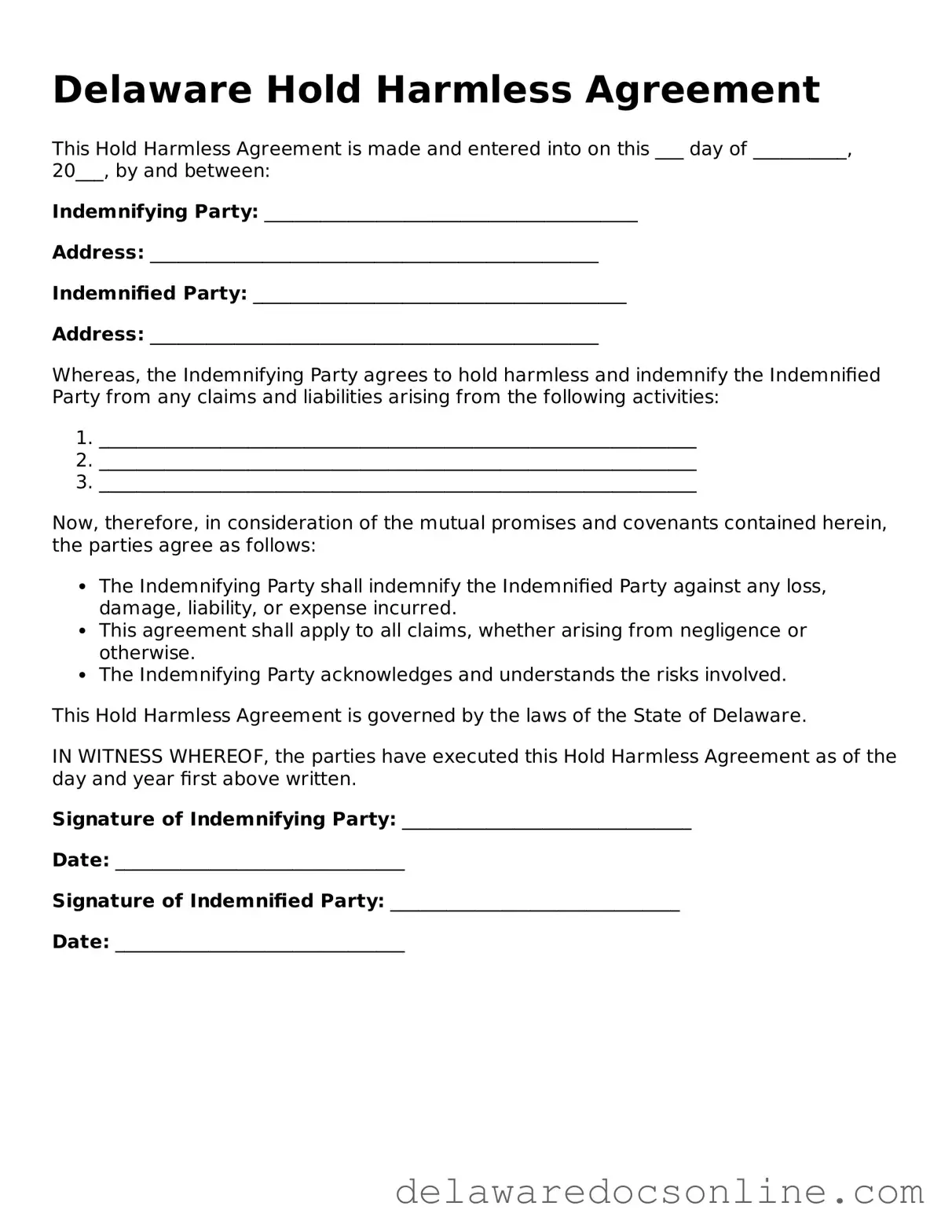Delaware Hold Harmless Agreement
This Hold Harmless Agreement is made and entered into on this ___ day of __________, 20___, by and between:
Indemnifying Party: ________________________________________
Address: ________________________________________________
Indemnified Party: ________________________________________
Address: ________________________________________________
Whereas, the Indemnifying Party agrees to hold harmless and indemnify the Indemnified Party from any claims and liabilities arising from the following activities:
- ________________________________________________________________
- ________________________________________________________________
- ________________________________________________________________
Now, therefore, in consideration of the mutual promises and covenants contained herein, the parties agree as follows:
- The Indemnifying Party shall indemnify the Indemnified Party against any loss, damage, liability, or expense incurred.
- This agreement shall apply to all claims, whether arising from negligence or otherwise.
- The Indemnifying Party acknowledges and understands the risks involved.
This Hold Harmless Agreement is governed by the laws of the State of Delaware.
IN WITNESS WHEREOF, the parties have executed this Hold Harmless Agreement as of the day and year first above written.
Signature of Indemnifying Party: _______________________________
Date: _______________________________
Signature of Indemnified Party: _______________________________
Date: _______________________________
